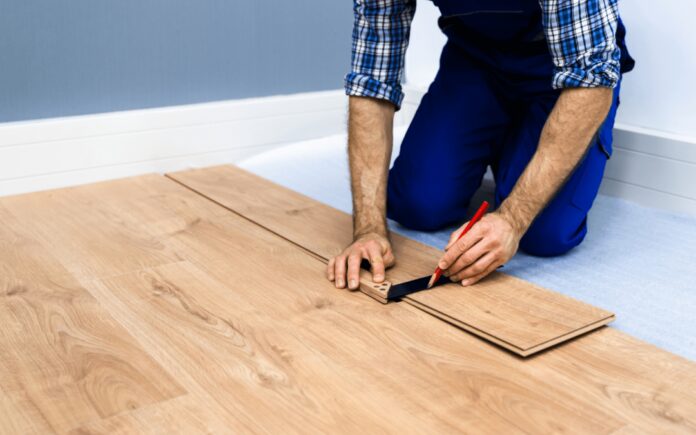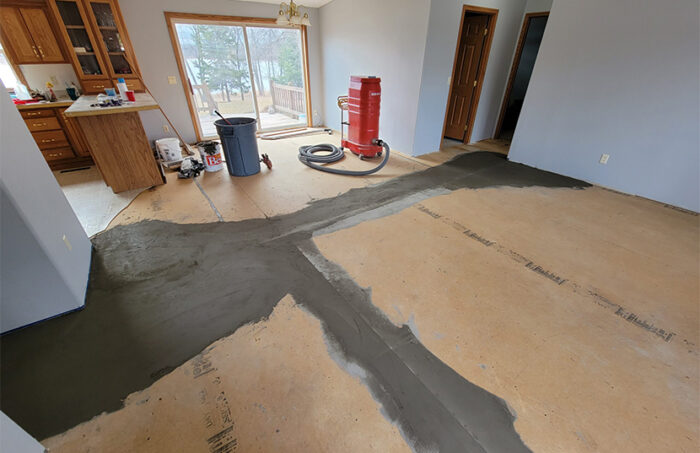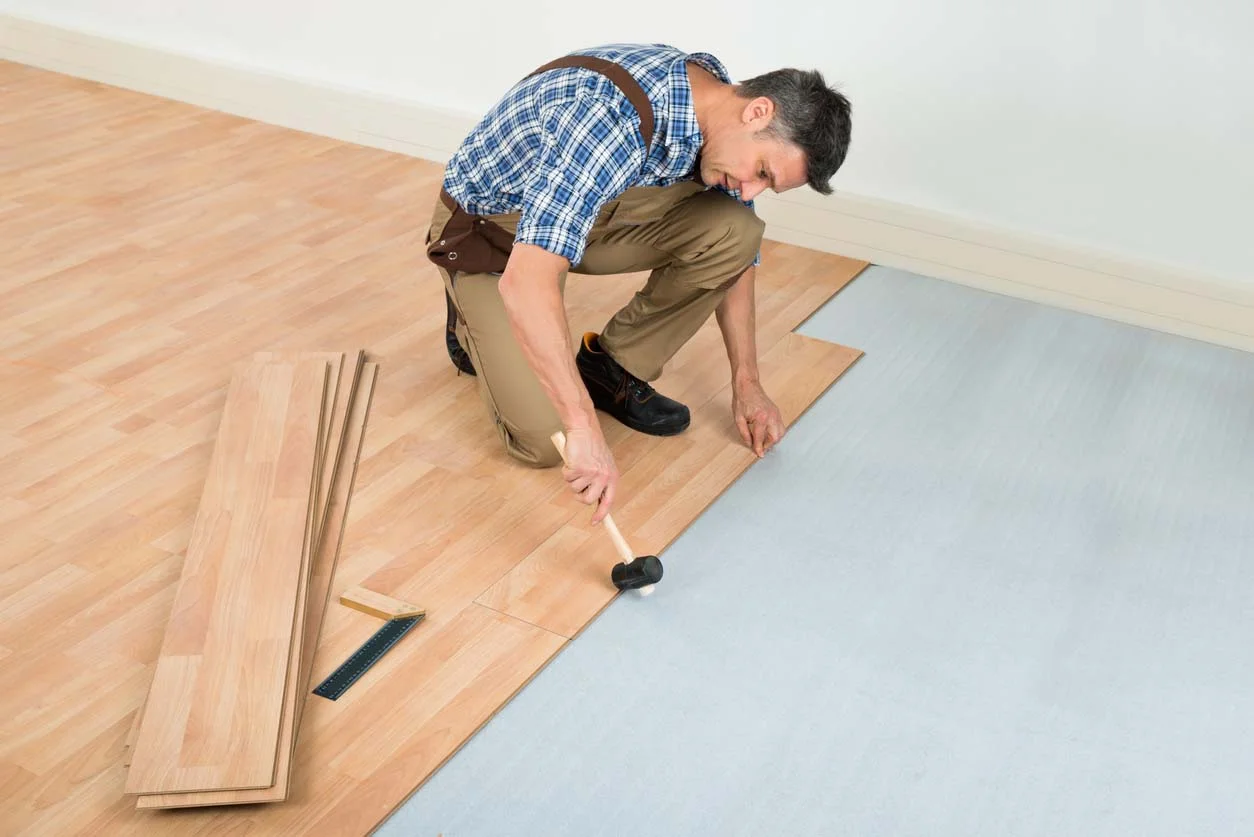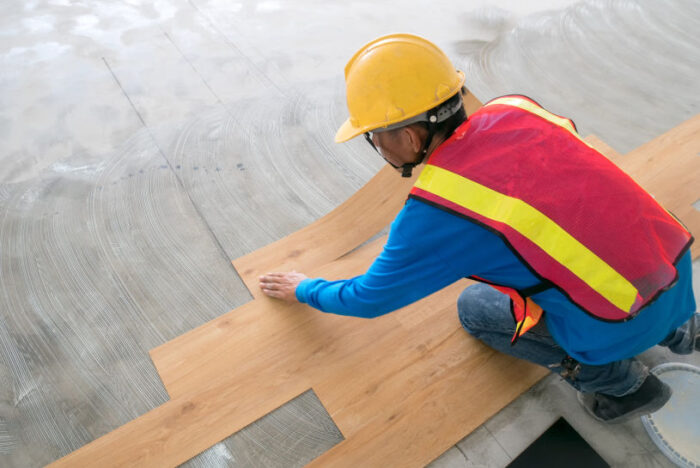
In the pursuit of a DIY dream home, fitting laminate flooring yourself can be both satisfying and cost-effective.
However, avoiding common pitfalls is essential for a successful outcome. From insufficient acclimation that can lead to warping, to ignoring critical manufacturer instructions that jeopardize warranties, and mistakes like poor subfloor preparation, inadequate expansion gaps, and improper cutting techniques, there’s a lot to consider.
This post will delve into the top mistakes to avoid when tackling your laminate flooring project. Whether you’re a seasoned DIY enthusiast or a newbie, understanding these pitfalls will help you achieve a professional-looking result that enhances the beauty and functionality of your living spaces.
1. Not letting the floor acclimatize
Insufficient acclimation is a critical mistake that often goes underestimated in DIY flooring projects. When materials are not allowed to acclimate properly to the room’s conditions, it can lead to several issues.
Firstly, without adequate acclimation, the flooring may expand or contract after installation, causing gaps or buckling. This can result in an unsightly, uneven floor surface that can be expensive and challenging to rectify.
Moreover, inadequate acclimation can void the manufacturer’s warranty, leaving you responsible for any future problems or repairs. It’s crucial to follow the recommended acclimation period to ensure the flooring adapts to the room’s temperature and humidity, allowing for a stable and durable installation in the long run. Skipping this step can turn what should be a satisfying DIY project into a frustrating and costly endeavor.
2. Not preparing or leveling the subfloor properly

Poor subfloor preparation is a mistake that can undermine the entire project. Neglecting to properly prepare the subfloor can lead to a host of issues. First and foremost, a subfloor that isn’t level can result in an uneven floor surface, causing the material to creak, crack, or feel unstable underfoot.
Additionally, if the subfloor isn’t clean and dry, it can lead to mold, mildew, or moisture-related damage over time, compromising the integrity of the flooring. To avoid this mistake, take the time to level the subfloor, remove any debris or old flooring, and ensure it’s dry and free of moisture issues. A well-prepared subfloor is the foundation for a successful DIY installation.
3. Not using high-quality Underlay
Not using underlayment is a common mistake that can have far-reaching consequences when installing laminate or wood flooring. Underlayment serves multiple vital purposes in a project. First, it provides a cushioning layer that makes the floor more comfortable to walk on and helps reduce noise transmission between rooms.
Secondly, underlay acts as a moisture barrier, protecting your flooring from potential damage caused by moisture from the subfloor or the environment. Lastly, it helps to smooth out small imperfections in the subfloor, ensuring a more even and stable surface for your new flooring.
Neglecting underlayment can lead to a less comfortable, noisier, and potentially less durable floor, making it an essential component of a successful DIY project.
4. Not leaving enough space around the perimeter of the room

Inadequate expansion gaps represent a critical error in DIY flooring installations. These gaps serve as a buffer for the natural expansion and contraction of wood or laminate flooring due to temperature and humidity fluctuations. When they are not correctly sized or placed, several issues can arise.
Insufficient gaps can lead to unsightly buckling, warping, or even cracking of the flooring material. In severe cases, this can necessitate costly repairs or a complete reinstallation. It’s crucial to follow the manufacturer’s recommendations for expansion gap width and to ensure they are consistently maintained along walls, doorways, and other fixed structures.
These gaps are essentially an insurance policy against future problems, making their proper installation a key factor in a successful DIY flooring project.
5. Not following manufacturer instructions
Ignoring manufacturer instructions is a significant and often underestimated mistake during DIY flooring installations.
These instructions are carefully designed to ensure the proper installation and performance of the specific flooring product you’ve purchased. Disregarding them can lead to various problems.
Firstly, it can void any warranty or guarantee associated with the flooring, leaving you responsible for any issues that may arise.
Secondly, it can result in improper installation techniques, potentially causing damage to the flooring material, subfloor, or even safety hazards during and after installation.
Manufacturer guidelines encompass crucial details like acclimation, installation methods, recommended tools, and maintenance instructions.
Always read and follow these instructions meticulously to achieve the best results and preserve the integrity of your investment.
6. Incorrect cutting

Incorrect cutting is a mistake that can significantly impact the overall aesthetics and functionality of your DIY laminate or wood flooring project. It’s essential to pay meticulous attention to cutting techniques to ensure precise and clean cuts. Here’s why it matters:
- Aesthetics: Inaccurate cuts can lead to uneven seams between planks, which can be highly noticeable and unsightly. Poorly cut planks may not align correctly, creating irregular gaps, patterns, or even causing the flooring to appear disjointed.
- Fit and Stability: Improperly cut planks might not fit snugly together, leaving gaps that compromise the stability and structural integrity of the floor. These gaps can also collect dirt and debris, making maintenance more challenging.
- Safety: Jagged or uneven cuts can pose a tripping hazard, especially if the flooring is installed in high-traffic areas. Ensuring precise cuts is crucial for the safety of everyone in the space.
To avoid these issues, invest in the right tools for the job.
A proper saw, such as a mitre saw or circular saw with a fine-toothed blade designed for laminate or wood, will help you achieve clean, accurate cuts. Take your time measuring and marking the planks before cutting and consider using a straight edge or cutting guide to ensure straight lines.
Additionally, it’s a good idea to practice your cutting technique on scrap pieces of flooring before making cuts on the actual installation. This extra care and attention to detail will result in a more visually pleasing and functional floor.
7. Not using light to determine the direction of planks
Finally, light should play a crucial role in determining the direction to lay laminate flooring.
The direction of the planks should follow the primary source of natural light in the room. Installing the flooring perpendicular to the light source maximizes the room’s visual depth and enhances the overall aesthetic.
This layout reduces the appearance of seams and creates a harmonious flow. Conversely, laying flooring parallel to the light source can accentuate seams and make the room appear narrower or disjointed.
Properly utilizing light ensures a more visually appealing and spacious feel in the space, making it an essential consideration for flooring decisions.
If you’d like to learn more about underlays and flooring tips in general, visit underlay4u.co.uk
















